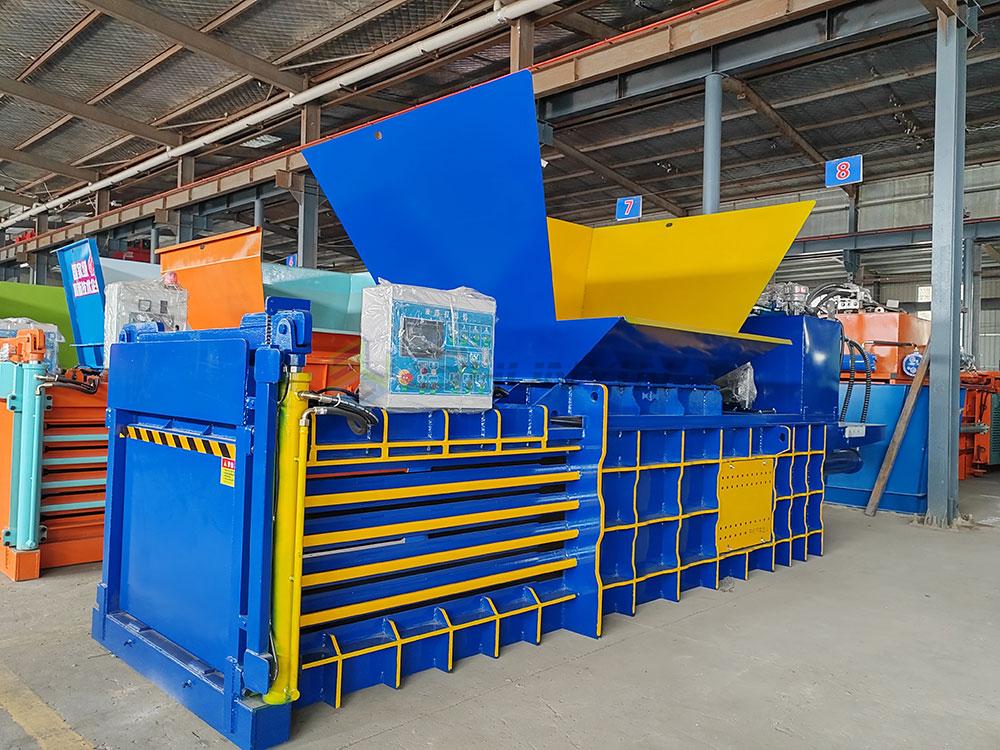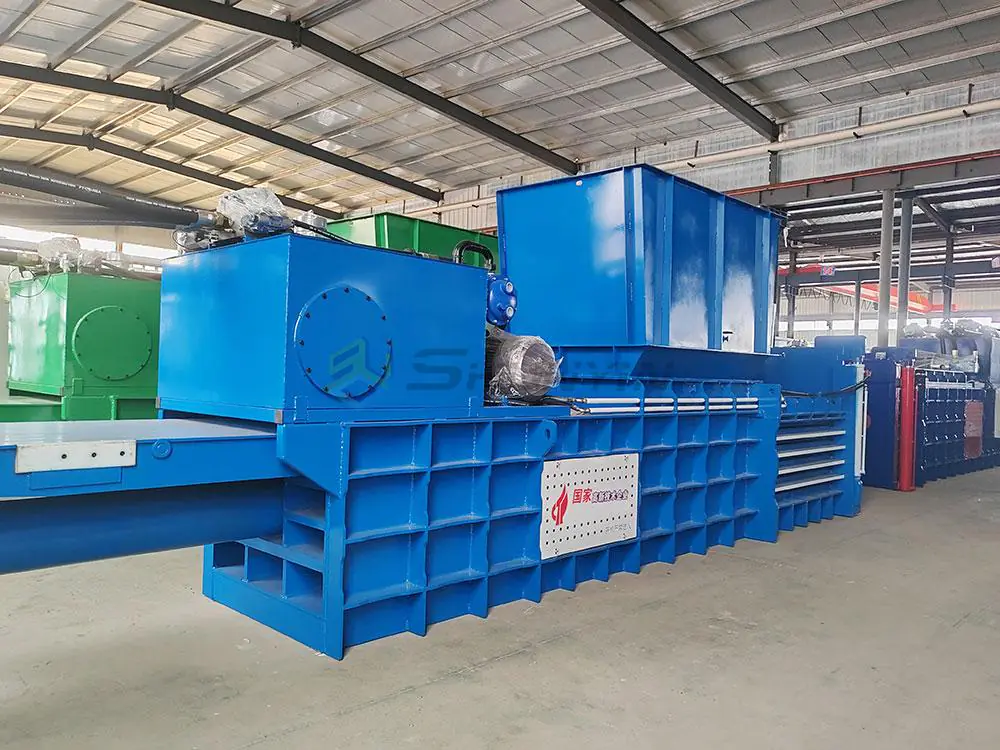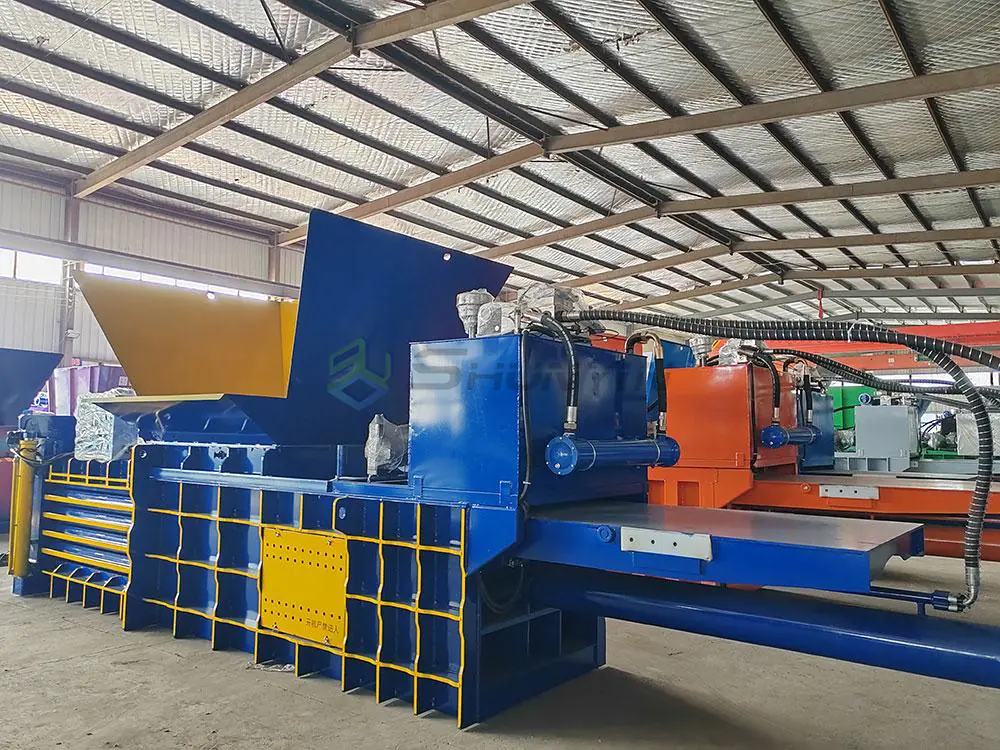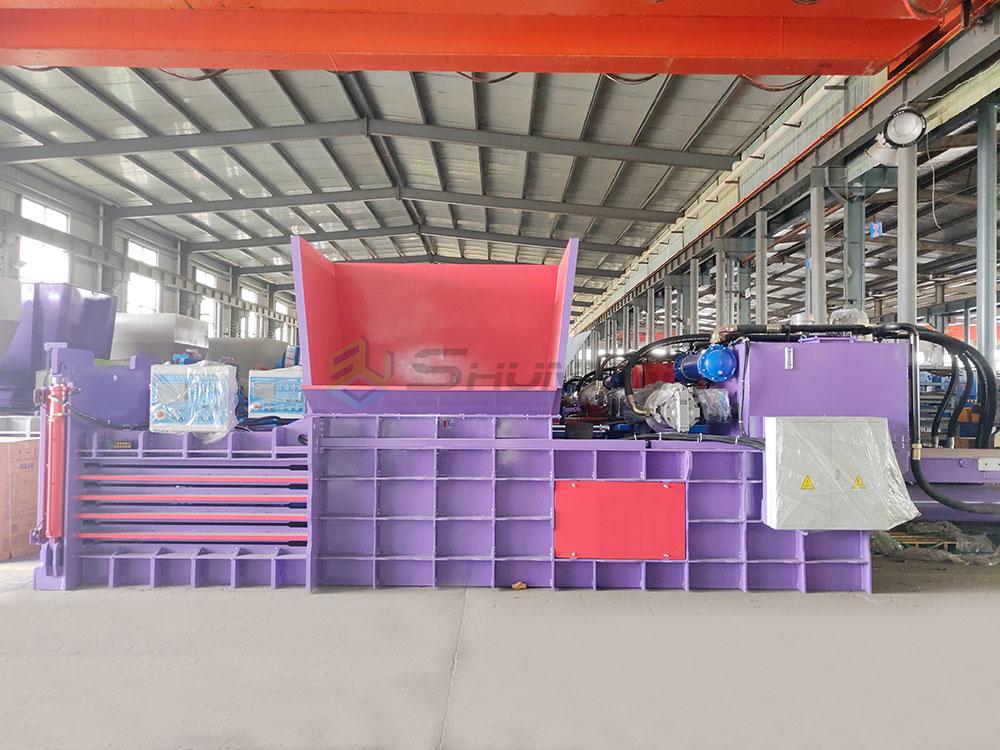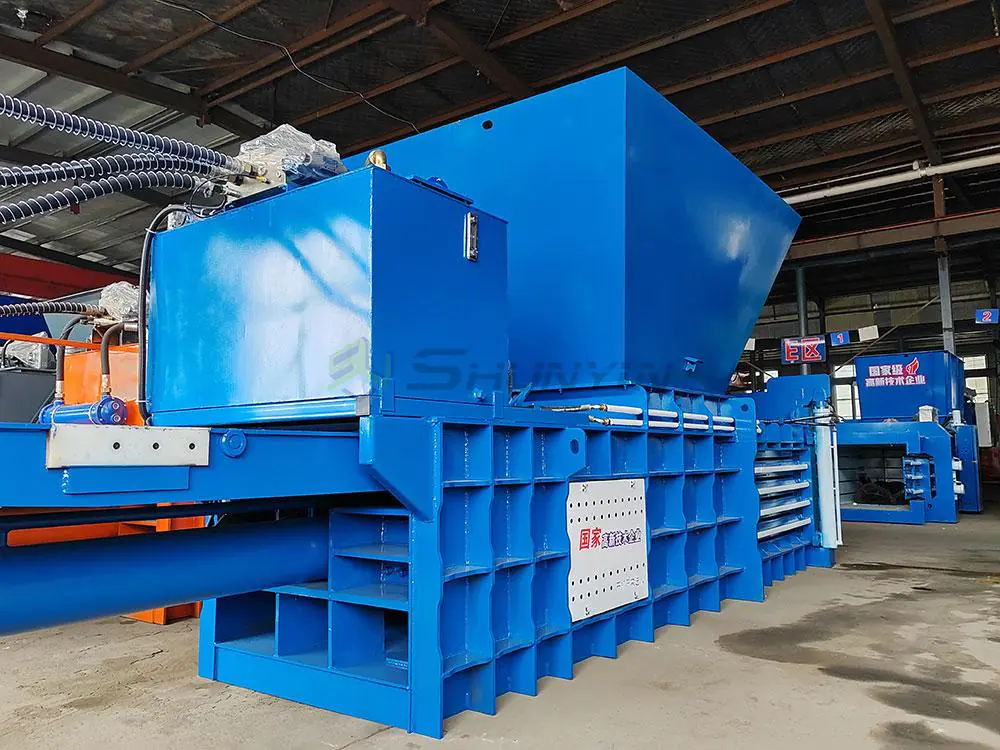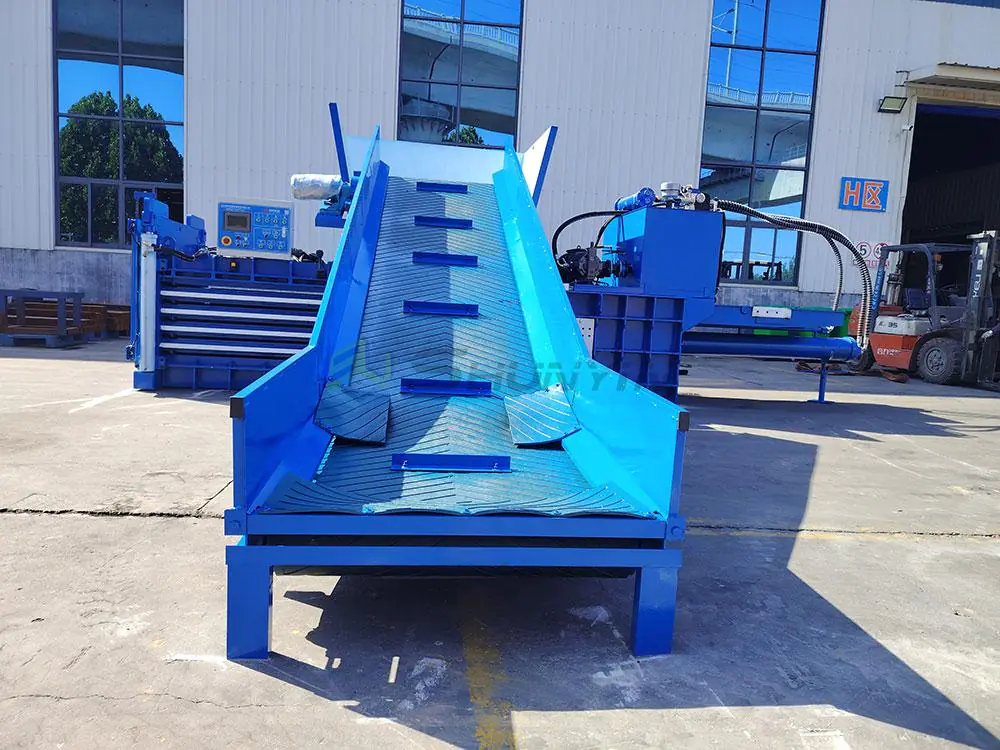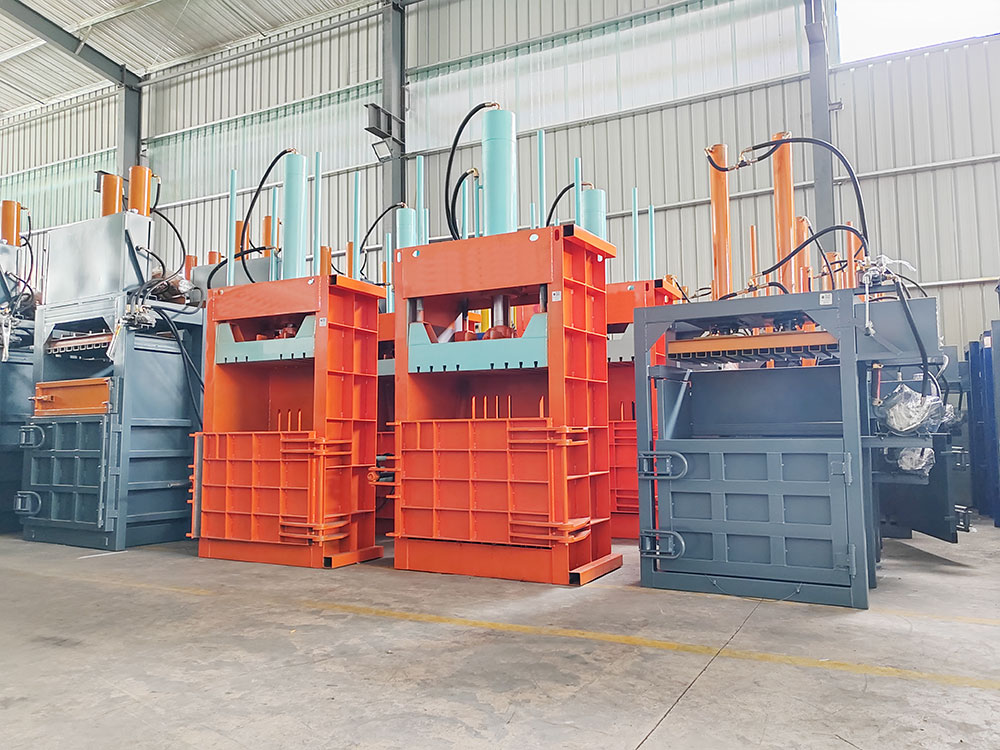
Imagine reducing cardboard waste from a 20-truck fleet into compact blocks fitting in a single pickup bed. I’ve seen hydraulic baling presses transform operational efficiency – but what exactly makes these machines tick?
A hydraulic baling press machine uses pressurized fluid to compress recyclables into densely packed bales. These robust systems process materials from PET bottles to metal scraps through hydraulic cylinders generating over 200 tons of force, with features like programmable logic controllers and safety interlocks ensuring consistent output. Common applications include recycling centers and manufacturing plants handling cardboard, plastics, or textile waste.
Your waste management costs could drop 40-60% with the right baling solution. Let’s unpack how these hydraulic workhorses deliver such dramatic results.
What is a Hydraulic Baling Machine?
The steel jaws clamping down on that mountain of cardboard aren’t magic – they’re hydraulic engineering mastery. I once watched a client compact 50kg of foam padding into a TV-sized brick using one.
Hydraulic baling machines utilize Pascal’s principle to multiply force through oil pressure, converting 7-15KW motor power into 50-500 tons of compression force. Key components include hydraulic pumps, dual-action cylinders, and reinforced steel chambers. Modern variants offer:• Auto-tie systems for bale securing• Touchscreen operation panels• Remote diagnostics via IoT sensors

Hydraulic vs Pneumatic: Why Fluid Power Dominates
| Feature | Hydraulic Balers | Pneumatic Balers |
|---|---|---|
| Force Generation | 180-450 Bar | 6-10 Bar |
| Energy Cost | $0.18/kWh | $0.22/kWh |
| Maintenance | Quarterly oil changes | Daily air filter cleaning |
| Noise Level | 75-82 dB | 88-95 dB |
| Ideal Materials | Metals, hard plastics | Foam, textiles |
At our Hangzhou factory, we’ve phased out pneumatic models entirely. The math speaks clearly – hydraulic systems deliver 4× the compression force per dollar in energy costs. Clients like Japanese electronics recyclers require 300+ ton models to handle circuit board waste, forces only achievable through hydraulic power.
Maintenance teams prefer the quarterly oil changes over daily filter replacements. The sealed hydraulic systems also prevent material contamination – crucial for food-grade plastic recycling.
What is the Purpose of a Hydraulic Press Machine?
The baling machine’s steel jaws do more than squish boxes – they’re profit engines. One textile client turned 12 truckloads of fabric scraps into 24 compact bales monthly, cutting haulage fees by $38,000/year.
Hydraulic press machines serve three core purposes:1. Volume reduction: Compress materials to 1/8 original size2. Material preparation: Create uniform bales for automated processing3. Cost optimization: Reduce storage/transportation expenses by 40-75%

Industry-Specific Applications Breakdown
Automotive Recycling
- Scrap metal density: 350 kg/m³ → 2100 kg/m³ post-compression
- Typical model: 250-ton horizontal baler with shear attachment
Supermarket Chains
- Cardboard bale weight: 450-600 kg
- Payback period: 8-14 months through waste resale
PET Bottle Processors
- Required force: 120 tons for food-grade compaction
- Throughput: 2-4 tonnes/hour
Our clients in Singapore’s shipping industry standardized on 300-ton horizontal balers for processing dock waste. The compacted bales ship more efficiently to Malaysia’s recycling plants – a key factor when container space costs $2,800/week.
What is the Difference Between Hydraulic and Mechanical Press Machines?
When a Canadian paper mill replaced old mechanical presses with our hydraulic models, their maintenance costs dropped 62% in the first year. The numbers reveal why:
| Parameter | Hydraulic Press | Mechanical Press |
|---|---|---|
| Maximum Force | 500 tons | 120 tons |
| Energy Efficiency | 85% | 68% |
| Speed (Cycles/Hr) | 45-60 | 90-120 |
| Force Adjustment | Infinite (0-100%) | Fixed stages |
| Safety Features | Pressure relief valves | Mechanical stops |

When to Choose Hydraulic Over Mechanical
Choose hydraulic if:
- Processing mixed/dense materials (metal + plastic)
- Requiring variable compression settings
- Prioritizing worker safety with overload protection
- Handling sensitive materials needing controlled pressure
Opt for mechanical when:
- High-speed processing is critical (200+ cycles/hour)
- Budget constraints under $15,000
- Processing uniform soft materials (cotton/foam)
Our engineers recently configured a dual-purpose system for a Tokyo recycler – hydraulic compression with mechanical ejection. This hybrid approach cut cycle time by 18% while maintaining 280-ton compression force for electronic waste.
What is the Difference Between a Power Press and a Hydraulic Press?
The choice between power (mechanical) and hydraulic presses boils down to precision vs speed. During a plant tour in Osaka, I witnessed both types processing aluminum scraps:
| Criteria | Hydraulic Press | Power Press |
|---|---|---|
| Cycle Control | Programmable dwell time | Fixed cycle |
| Noise Level | 78 dB | 102 dB |
| Energy Consumption | 18 kW | 22 kW |
| Tooling Costs | $8,000-$15,000 | $3,500-$7,000 |
| Floor Space | 12m² (horizontal) | 8m² |

Cost-Benefit Analysis: 5-Year Projection
Hydraulic Press (200-ton model)
- Initial cost: $68,000
- Maintenance: $1,200/year
- Energy use: $16,300/year
- Output value: $420,000/year
Power Press (150-ton model)
- Initial cost: $41,000
- Maintenance: $3,800/year
- Energy use: $19,500/year
- Output value: $387,000/year
While power presses show lower upfront costs, our analysis reveals hydraulic presses deliver 22% higher ROI over five years. The precision in metal forming reduces material waste by 12-18% – critical for copper wire processors selling scrap at $6,800/tonne.
Conclusion
Hydraulic baling presses offer unmatched force and versatility for industrial recycling. From 80-ton vertical balers for supermarkets to 400-ton metal processors, these machines turn waste streams into revenue. For a customized solution balancing throughput and budget, contact our engineering team.


